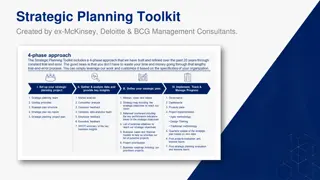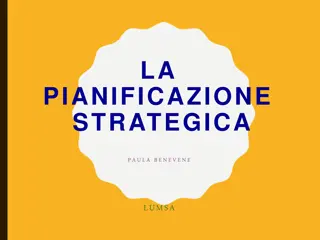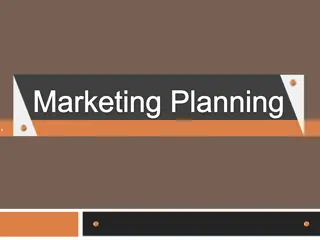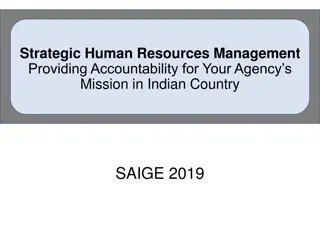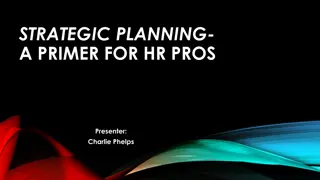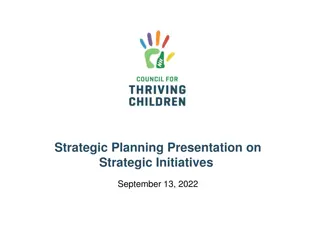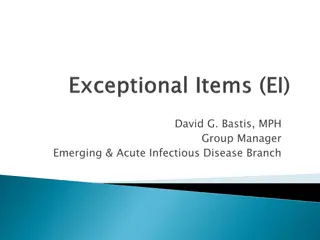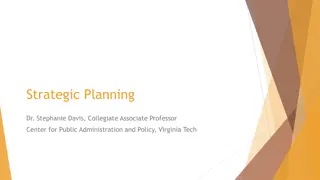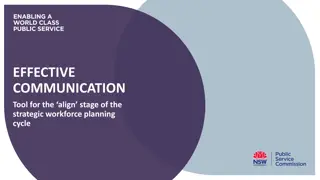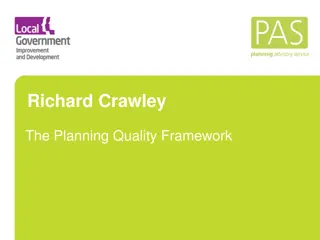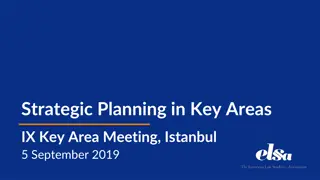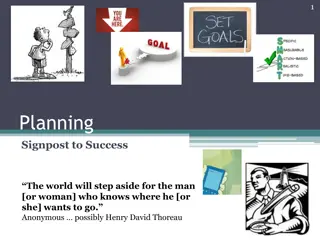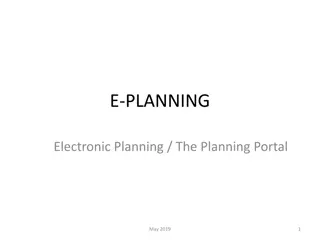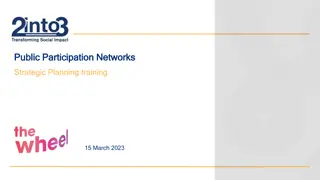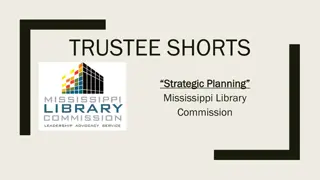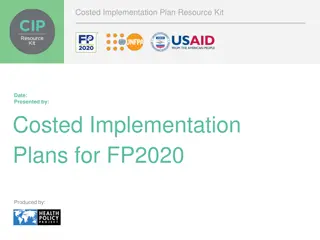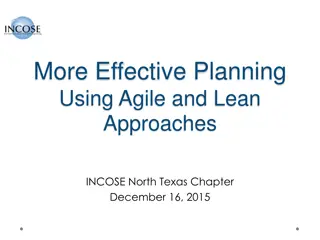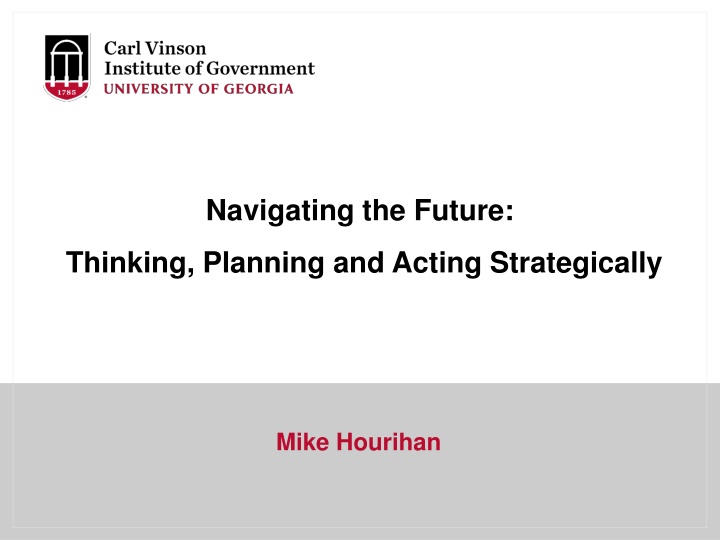
Strategic Planning and Future Navigation Insights
Explore the differences between strategic and tactical planning, the importance of strategic planning, key elements of a good strategic plan, and how it differs from long-term planning. Gain valuable insights on creating a vision, setting goals, and understanding the roles of strategic and tactical decisions in organizational success.
Download Presentation

Please find below an Image/Link to download the presentation.
The content on the website is provided AS IS for your information and personal use only. It may not be sold, licensed, or shared on other websites without obtaining consent from the author. If you encounter any issues during the download, it is possible that the publisher has removed the file from their server.
You are allowed to download the files provided on this website for personal or commercial use, subject to the condition that they are used lawfully. All files are the property of their respective owners.
The content on the website is provided AS IS for your information and personal use only. It may not be sold, licensed, or shared on other websites without obtaining consent from the author.
E N D
Presentation Transcript
Navigating the Future: Thinking, Planning and Acting Strategically Mike Hourihan
Strategic Planning is . . . A process to establish vision (direction), mission (priorities / objectives), and goals / measures / timetables (action plans) A guide to aid in your choices of what you will do and what you will not do Aligning the entire organization around a single plan
What is the difference between STRATEGIC and TACTICAL? STRATEGIC creates a vision for people to look to the future and conceive the dreams and general direction to get there. It is the floodlight illuminating the way; - the telescope aimed at some place to go. It is the Balcony; the Mountaintop; the General. TACTICAL is the operational, day-to-day actions, behaviors and activities that accomplish the goal. It is the spotlight on what is; - a clear focus on the detail of right now . It is the Dance-Floor; the Field; the Soldier.
Why do Strategic Planning? If you Fail to Plan, then you Plan to Fail Be Proactive about the Future Strategic Planning improves Performance and Counters short-term Thinking Describes and Communicates the Vision, Direction, and Desired Outcomes
A Good Strategic Plan should . . . Create the future reality Identify the What and Who and When Prioritize using agreed upon criteria and / or metrics Pinpoint Stakeholders, Partnerships, and Funding Identify Resources, Shortfalls and Needs Be Flexible allow and accommodate change What else? What is your Past Experience?
Strategic Planning vs Long Term Planning Strategic Long Term Plans and Actions Planning only Identify and Resolve Major Issues Specify Goals and Objectives Consider Future Trends Assume Current Trends Visionary Imagination Reality Projections Pro - Active Oriented Reactive Oriented
The 4 Ps : Purpose: Why do we have to do this? - What would happen if we don t? Picture: What does completion look like? - Begin with the end in mind. Plan: How will it work? - What needs to be done to get to the picture? Part: What is my / your role? - What part do we play?
Strategic Planning An Eight Step Model Develop Action Plans And Metrics Create the Vision Clarify the Mandates Implement The Plan Assess Present Circumstances Evaluate And Adjust Make Changes; Stay Fluid Determine What Is Required
Assess Present Circumstances S W O T Analysis STRENGTHS (assets, positives, resources; green lights ) depth of experience of the workforce WEAKNESSES (negatives, liabilities, potholes; red lights ) morale suffering due to pay structure
Assess Present Circumstances S W O T Analysis OPPORTUNITIES (possibilities, potentials, prospects) millenials have comfort with technology THREATS (risks, obstacles, challenges; yellow lights ) opposition from community / NIMBY s
Develop Action Plans . . . to bridge the gap between the Present and the Future Start with the Future and plan backwards How are we going to get it done? Who is going to get it done? Measurable steps Without a plan, the future is the same as the present, only it is much longer.
PRIORITIZATION MODEL Important Not Important Urgent Urgent Not Not Urgent Urgent Not Important Important

